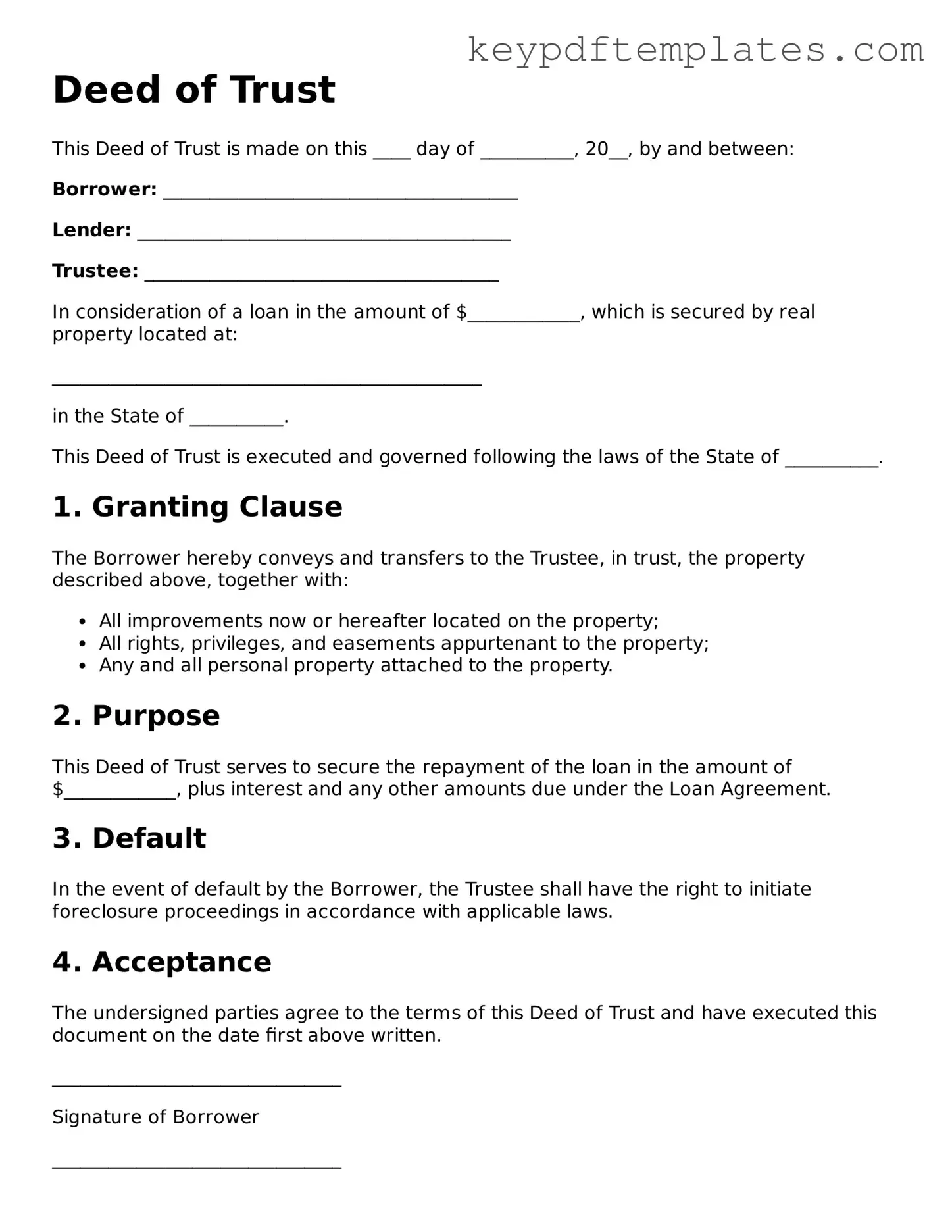Printable Deed of Trust Template
A Deed of Trust is a legal document that secures a loan by transferring the title of a property to a trustee, who holds it on behalf of the lender until the borrower repays the debt. This arrangement provides protection for the lender while allowing the borrower to retain possession of the property. Understanding the nuances of a Deed of Trust can be crucial for anyone involved in real estate transactions.
Modify Document Online
